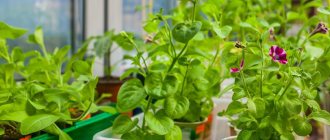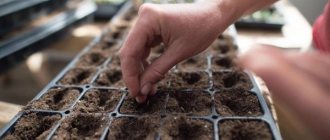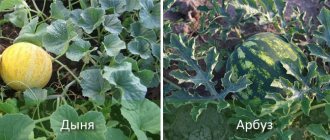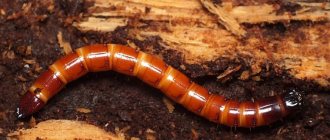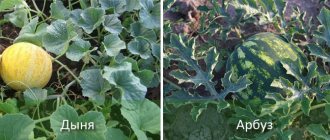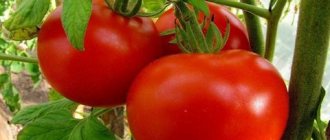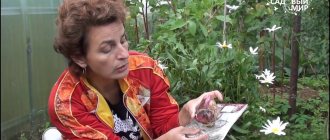We all look forward to this incredible taste. Strawberries, or else everyone knows them as wild strawberries, are a plant that everyone grows on their plots of land. There are several planting options: with tendrils, by dividing the bushes and by sowing.
Sowing strawberries for seedlings will provide you with the variety you choose, the quality of the seedlings will be better and will save money
The downside is the longer time commitment.
All gardeners know about the existence of the lunar calendar, although science has not proven its effect. Therefore, let's consider in this article the question of when it is necessary to sow strawberry seedlings.
The best varieties
Gardeners know that there are now many varieties of strawberries. Varieties are distinguished by sugar content, berry size, fruiting throughout the summer or twice a year, or perhaps you will enjoy these berries before the onset of frost.
There are also varieties for growing on your own plot or in greenhouses, for convenient transportation, growing in flowerpots on balconies, or strawberries that grow on the window
The strawberry variety “Vima Zante” is frost-resistant; ripe strawberries can be savored in early June. “Kimberly” - this variety is loved by those with a sweet tooth; its sugar content is much higher than other varieties; it can be transported without damaging the berries.
For those who do not want to work a lot on a plot of land with strawberries, the Camarosa variety is suitable. She does not need to constantly trim her antennae, and the advantage of the Deroyal variety is its resistance to disease.
The Zephyr variety bears fruit earlier, the Cinderella variety is mid-season, but fruits well. The fruits of the Gigantella variety are characterized by large berries up to 100 grams. Remontant varieties that bear fruit all summer include Saran, Temptations, Elizaveta, Regina, Lesnaya Skazka.
Strawberry marshmallow
The seeds take a long time to germinate, so patience is required and everything will work out. Each owner can choose a strawberry variety that suits their taste.
Why do many people cover their garden beds with black film?
Variety Evis Delight
We advise you to purchase a film or non-woven material of black color, with a density of 80 g/sq.m. When growing strawberries, it allows you to solve several problems at once. First of all, it is protection from weeds, which with regular watering are a real disaster. Secondly, the soil under the shelter will dry out less and warm up better, and this is very good for plants.
And finally, the berries will lie on clean material, which means they will rot less. In addition, the tendrils that form at the beginning of flowering will not be able to take root on the black tissue, and you will not have to tear them out of the ground - you will simply cut them off several times during the season: if they are not removed, they will “eat” up to 30% of the harvest.
If you want to breed a certain variety, then young rosettes can be rooted in pots, and then separated from the mother plant and grown in a greenhouse. Just keep in mind that plants in pots require daily watering.
Growing strawberry seedlings
You need to understand that strawberry seedlings require 12 hours of daylight. Therefore, the best period for sowing is February and March. In this case, you can plant the finished seedlings in warm soil and harvest early. When sowing strawberries in May, the seedlings will need to be left to winter in the house.
Planting seedlings before February will require additional sun, so you will be forced to provide lighting for them.
If you want to plant seedlings in the fall, then sowing is best done at the end of April. This will allow the seedlings to grow and have time to gain a foothold in the soil.
Selection and preparation of seeds for sowing
To ensure high germination of planting material, you need to leave the seeds for several days at a temperature of 0 to 5 degrees, or soak the seeds in potassium permanganate. This method is necessary for seeds collected from your own plot of land.
If you bought a seed for planting, then basically it will already be processed.
Selection of substrate and containers for planting
Strawberry seedlings are demanding, so you need to carefully select both the soil and the container in which they are grown. The seedlings do NOT like replanting, so it is recommended to sow the seeds in separate cups or wooden containers, pre-coated with manganese. It is also good to plant in peat tablets or pots.
The choice of substrate must be taken responsibly.
The substrate must be of good quality and composition, the best ratio is 3:5 river sand with humus or peat, sand and vermiculite 3:3:4
Soil pre-treatment
To plant seeds, you need to prepare the soil. Mix some sand, vermicompost and peat, or take sand, peat and wood, mix everything in a ratio of 1 to 1. To destroy various types of fungi in the soil and for quick germination of seeds, you need to quartz the soil before planting.
If you don’t have a quartz lamp, you can take the soil and dry it for half an hour in the oven at 150 degrees. But it’s best to buy a ready-made substrate and not waste time
Stratification
What is stratification? This is placing seeds in winter conditions. That is, the seeds are cooled and kept in cold conditions - thereby programming them for quick hatching. There are two methods that last from 2 to 5 weeks.
First: the seeds are placed between two wet disks, put them in a bag, then in a container with a lid. Next, put it in the refrigerator and keep it for 4 or 5 weeks with regular ventilation.
Second: snow is placed on the ground and seeds are sown, thereby the snow will draw the seeds into the soil. Place this container in the refrigerator for 2 weeks.
Stratification of seeds on snow
Growing seedlings from seeds
Growing seedlings must begin with the selection of seed material. You need to plant them in pre-prepared containers, not too deep, food boxes with holes. Before planting, the soil is calcined or a substrate is used, the containers are treated with potassium permanganate. Seeds are planted at a distance of 3-4 cm from each other.
For better germination, control the water balance, temperature and sunlight or backlight lamps.
Planting strawberry seedlings in peat tablets
Peat tablets are one of the best options for planting strawberries. Since tablets come in different diameters, for strawberries the optimal option is 24-33 mm in diameter. The tablets will provide you with an excellent environment, save time and effort, and make things easier when diving.
To plant seeds, first the tablets are soaked in water, then the seeds are sown in 4-5 pieces. They don't go deeper. Next, the tablets are placed in a container under a lid for 3 days.
Strawberry seedlings in a greenhouse
The regime and soil preparation in a greenhouse for growing strawberries is no different from open ground.
Seedlings are also grown in containers and then planted in greenhouses. The only difference is that in greenhouse conditions it is easier to control lighting and temperature conditions.
Common Questions
Very often, gardeners ask questions about how to properly plant strawberries in uncomfortable conditions, for example, if the climate is quite cold, or the space for planting is very limited.
How to plant strawberries if there is little space
If the site has a modest area, then you have to look for ways to economically place crops. For strawberries, you can use a high pyramidal bed. To form it, you will need 4 boxes of different sizes with the bottom removed and a pipe, 5 cm thick and 2 m high. You need to drill holes in the pipe, they will serve as an irrigation system. Then the pipe is buried in the ground to a depth of about 1 m. The first largest box is installed on the ground. The pipe should be in the center of the structure. The box must be filled with fertile soil to the brim, slightly pressing the soil. Then install a smaller box and repeat the procedure. Thus, you will get a pyramid of boxes filled with ready-made nutrient soil with a pipe in the middle, rising 10-15 cm above the structure. This is necessary so that it is convenient to pour water. Now you can place the seedlings in boxes. With this method, the bushes will grow together without interfering with each other.
Planting strawberries under black covering material
Planting strawberries under black covering material
Black spunbond is spread around the entire perimeter of the bed, the edges are sprinkled with earth so that the material does not move out. At the locations of the planting holes, holes of the appropriate diameter are cut. The strawberries are immersed in the resulting hole, carefully straightening the roots. This method allows you to get rid of weeds. In addition, natural watering from precipitation will be sufficient. The material allows moisture to pass through and retains it well. Another plus is a clean harvest. The berries do not get dirty when they come into contact with the surface. In addition, due to good air permeability, the bed does not need to be opened periodically. Black covering material lasts 3-4 years. During this period, the strawberries grow and need to be renewed, so the bed is cleared of material and bushes and a new area is prepared.
Planting is a responsible undertaking, the success of which largely determines the future harvest. If you follow all the rules and terms, then strawberries are guaranteed to delight you with an abundance of sweet, ripe berries for several seasons.
0 0 votes
Article rating
How to grow frigo strawberry seedlings
Frigo in our area, few people still know how to grow it. Unlike Holland and Great Britain, where they completely switched to growing strawberries with Frigo seedlings. There are three categories of Frigo seedlings, which are planted in late autumn and stored at a temperature of 0-1 degrees, humidity 89 and 90%.
There are: class A (rosette diameter 12-15 cm), class A + (diameter 15 cm or more, 2-3 flowers form), class A + extra (rosette diameter 20 cm +).
At home, it is very difficult to properly store such seedlings, and expensive preparations are also needed to process them. Therefore, it is best to buy Frigo seedlings from farmers
Recommended feeding
By the appearance of the rosettes, their general condition, size, number, turgor and color of the leaves, you can understand what element the plants lack.
Strawberry bushes most need nitrogen , potassium and microelements (boron, cobalt, zinc, molybdenum). Balanced compositions perfectly compensate for the deficiency of manganese, magnesium, sulfur, iron, silicon.
For active growth and expansion of leaf mass, young seedlings will need nitrogen.
At the initial stage of the growing season, humated urea and ammonium nitrate are excellent help. On acidic soils, calcium nitrate should be preferred. If nitrogen-containing fertilizers were applied in the fall, then in the spring you can do without them.
Around mid-summer, the crop is fed with phosphorus preparations. They stimulate the formation of roots and flower buds and increase the winter hardiness of plants. Potassium is very important for strawberries, as it is involved in all life processes. Foliar feeding with boron has a good effect on the quality of flowering and the number of future berries. Keep in mind that boron sold in pharmacies is in a form inaccessible to green pets and is not absorbed properly.
The photo shows specialized fertilizers, the range of which is very wide and varied.
The plant reacts positively to organomineral mixtures based on vermicompost or peat , but has a negative attitude towards chlorine, so you need to buy chlorine-free mineral complexes.
Starting from August - September, berry bushes are prepared for winter. They cut off wilted foliage, clean off plant debris and excess “whiskers” and spill the soil with multi-component compounds marked “Autumn” on the package. The volume of nitrogen in the final fertilizing should not exceed 350 g per 100 m2 of area. It must be kept in mind that an overdose is always more dangerous than a lack of nutrients. Apply fertilizers strictly following the manufacturer's recommendations.
Care
In order for seedlings to grow and develop longer, it is necessary to create comfortable conditions for them. They may differ for each region; it depends on the temperature regime of the region and the influence of various factors. Below we provide examples of processing and care.
Feeding and hardening
Plants are fed in the 4-leaf phase with phosphorus, nitrogen and potassium. To harden the seedlings, they are taken out to be slightly ventilated in April, but not in the wind, then when the soil warms up, they are planted on a plot of land.
Additional lighting
To prevent seedlings from stretching, it is necessary to provide comfortable lighting; this can be done using a phytolamp or LEDs. When the shoots begin to appear, the lamps should shine for 2-3 days the whole day, and then you can organize illumination for 13-14 hours a day.
You need to control the backlight; for this it is better to set a timer.
Choosing a landing site
The place allocated for the strawberry plantation should be well illuminated by the sun throughout the entire growing season of the plants. It is known that the points of sunrise and sunset, and the height of its location above the horizon, shift throughout the day and especially throughout the year. Experienced gardeners determine sunny zones by observing where and how the heavenly body moves. Also take into account shadows falling from objects on the site - buildings, fences, tall trees, including neighbors.
In lowlands with high groundwater levels, high boxes or “ridges” are installed, preventing rotting of plant roots and subsequent diseases
It must be remembered that strawberries belong to the Rosaceae family, so it is extremely undesirable to place them next to the rose garden, not far from fruit trees and berry bushes (apple trees, plums, pears, cherries, rowan berries, rose hips, raspberries, blackberries).
If necessary, think in advance about protection from birds, insects and other pests that love to eat berries.
Caring for strawberries after germination from seeds
After the seeds have sprouted, the plant must be properly cared for.
Temperature
Temperature is one of the most important indicators in the first stages of cultivation. So, in the first 1 and 1.5 weeks you need to maintain a temperature between +21 and + 23 degrees, then 18 will be enough. Higher temperatures can cause the stems to become elongated and thereby weaken them.
We remember that seedlings love light, so they are illuminated with lamps. 12 -14 hours of light is needed for good development. It is also better not to remove the protective glass or film from the container until the second sheet appears.
Irrigation
It is better to use melt water for watering seedlings and slightly warm. But tap water is not advisable. Add with a pipette or syringe, without getting on the leaves or damaging them. Strawberries do not like dryness, but there is no need to overwater them.
It is optimal to lightly moisten the soil every morning, controlling the humidity
Feeding
Like any crop, strawberries absorb all the microelements from the substrate, so there comes a time when it needs to be fed. It is better to feed seedlings in pots or containers at the 2-3 leaf stage. They also feed the seedlings after picking on the 4th or 5th day. Then fertilizing is carried out after 10 days. For this purpose, they use either the ready-made drug Aquarin, Fertik or Nitroammofoska.
Buoy fertilizers Aquarin for seedlings
Picking
Picking of plants into common boxes occurs in the phase of 2-3 leaves. Sticks can help to support the seedlings. Planted in pre-prepared pots, then moistened and left in the shade for 2 days. Next, put it in the usual temperature regime.
When to plant strawberries in summer
As you know, you can plant strawberries in the summer. But when is it better to plant a berry crop during this period so that it takes root and bears fruit well in the future? It is best to choose a period when the weather is not very hot and not very dry . But since different regions of our country have different weather and climatic conditions in the summer, it is quite problematic to name the exact dates.
In regions with hot and dry summers, it is better to avoid planting in early and mid-summer; the optimal time is August. In cooler areas, garden strawberries can be planted all summer long if conditions are optimal.
Important! If you plant strawberries during a hot, unfavorable period, there is a high probability that the bushes will not take root. Due to the high temperature of the soil and air, the root system will not be able to receive normal nutrition, and moisture will evaporate intensively from the surface of the leaves.
Diseases and their treatment
High humidity is the main thing to be afraid of. It provokes a disease such as blackleg. This is a fungal disease that threatens the plant during the seedling period. As soon as you see that some of the plantings have become lethargic, the leaves are turning black and the branches are breaking, you should begin careful observation and, if something happens, save the plants. Urgently transplant healthy plants into another soil, away from the sun's rays.
Black root rot
As soon as the plants take root, reduce the temperature and start adding fungicide.
Sick plants need to be destroyed; they will not be cured.
Besides illness, there are other problems that you will face.
The seedlings dry out
You need to water the seedlings infrequently, but so that the soil is completely moist to the depth. Since frequent moistening of the substrate causes the root to suffocate and the seedlings begin to dry out.
Rotting
Seedlings rot due to excessive moisture and insufficient oxygen in the root. It is worth checking the drainage system, and if it is too late, it is worth transplanting the seedlings into another substrate.
Fitosporin solution
Stretched out
Seedlings stretch out and weaken due to poor lighting. Since seedlings are planted in winter or in the first month of spring, the seedlings mostly lack sun.
Another option is excessive air temperature in the rooms, therefore, when the leaves first appear, it is necessary to reduce the temperature and provide 24-hour lighting.
The density of sowing seeds should be controlled, since very dense sowing can cause the seedlings to become elongated. The seedlings stretch towards the top, avoiding other young shoots towards the sun. Nitrogen is another reason for the elongation of seedlings.
Overfeeding the substrate with nitrogen promotes its accumulation in the root, which gives the plant rapid growth.
Leaf color has changed
The color of the leaves and the color of the plant directly depend on microelements. Their deficiency or excess affects the plant. It can become oversaturated, even poisoned by concentrated fertilizer. In order for the situation to change, it must be washed with a sufficient amount of water, that is, make sure that the water flows through the soil, or change the soil altogether.
Leaves may also change color due to insufficient nitrogen. Due to a lack of phosphorus, they lighten and weaken on the outside, the stems become thin, and on the inside they turn purple.
But with a lack of potassium, the leaves turn yellow on the outside
If spots appear on the seedlings, this is a sign of iron deficiency, the marbled color of the leaves means a lack of magnesium, but the death of the growing point means a lack of boron. If the substrate contains sea sand, spots may appear on the leaves of the seedlings. In this case, it is necessary to rinse the root of the seedling from salt and replant it in another substrate.
It has been proven that if you grow seedlings in special peat-based tablets, they will not get sick.
Pests
Spider mites form punctures in the leaves and suck out the juice of the plant, causing it to die. They appear when there is a constant lack of moisture in the soil.
Immediately after you notice small holes in the seedlings, you need to immediately destroy the mite. It is a carrier of many plant diseases that cannot be cured. The following drugs are used: Acaricide, Aktara, Actellik, Fitoverm and Karbofos.
How to sow on snow?
After soaking the seeds, they are dried and planted in a substrate in a tray. The layer is covered with snow. The system of planting on snow is designed so that the snow melts and pulls the seeds along with it into the soil. That is, at the same time moisture will be retained. Next is the hardening method.
Why may seeds not germinate?
Seeds may not germinate: first of all, this is the quality of the seeds, the percentage of germination and many other influencing factors. But the most important: stratification - without it, the seeds will definitely not germinate, they simply will not wake up, will not be activated. You can't argue with nature.
If the planting material has expired, or the seeds are simply of poor quality, the seedlings will also not germinate. One of the factors is not covering the seeds under glass or film, and the temperature regime, if the room was cold or, on the contrary, hot.
When to plant in open ground
Let's look at the issue of planting rose seedlings in open ground, what to pay attention to and what conditions are necessary.
Strawberries like to grow in well-moistened soils and sunny areas. It is not recommended to plant plants where there will be drafts, cold air, or on dry or very wet soils. Neutral, well-fertilized soils are best.
Helpers for strawberries are green manure - onions, garlic, legumes.
The site for growing strawberries is prepared in advance: acidic soils are neutralized, the site is cleared of perennial weeds such as wheatgrass and others. In the fall, add humus or compost, 15-20 g of potassium chloride, 30-40 g of superphosphate and dig it up.
In the spring, humus is applied to the soil at a rate of 3-4 kg per square meter. Then the soil must be loosened to a depth of 10-12 cm, while burying organic residues. After two weeks, the seedlings are hardened off before planting. Seedlings are planted in open soil when all the frosts are over and the soil has warmed up to 12 degrees. Holes are made in the garden bed 20 to 40 cm wide, depending on the variety of strawberry.
The row spacing is approximately 70 cm wide. The soil from the holes is mixed with wood ash, poured into the hole and seedlings are planted. The root is placed so that there is no air left and watered.
After planting, the surface should be mulched with peat, 3-5 cm thick, this will prevent the formation of a soil crust and retain moisture.
When to plant strawberries in spring: optimal timing
When is it better to plant strawberries in the spring, in what month? The optimal timing for planting in open ground is determined by weather conditions. The right time comes when the air temperature begins to stably stay above 15 degrees Celsius .
The deadlines differ in different regions of our country:
- In the central zone (including the Moscow region) - the spring procedure can be performed at the end of April.
- In the South (Krasnodar Territory (Kuban), North Caucasus ) - at the end of March or early April.
- In Siberia, the Urals, and the Leningrad region , it is better to plant garden strawberries at the end of May.
The listed dates are arbitrary, because weather conditions may differ, so you need to focus on the air temperature.
Also, when choosing the optimal time, the cycles of the moon will come to the rescue. Thus, the best time for planting strawberries in the spring according to the Lunar calendar 2022:
- Favorable days: in March: 8, 9, 10, 11, 13, 14, 15, 17, 18, 19, 20, 21, 22, 23, 26, 27, 28, 29;
- in April: 5, 6, 7, 9, 10, 11, 19, 20, 23, 24, 25;
- in May: all days except 14-16 and 28-30;
- in June: 4, 5, 6, 8, 9, 10, 11, 19, 20, 21, 22, 23;
- Unfavorable time for the procedure: in March: 1, 2, 3, 16, 30;
- in April: 15, 16, 17, 29, 30;
- in May: 14, 15, 16, 28, 29, 30;
- in June: 12, 13, 14, 29.


